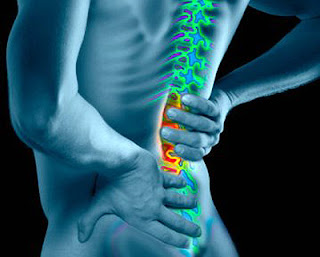The last few months have been going great when it comes to fitness, I've been hitting the new gym and feeling great. Little did I know that because of bad habits at work I was a ticking time bomb for having lower back pain.
I was at the gym on Sunday and using the Seat Row machine and I twisted the wrong way and tweaked my back and then I was a cripple.
What surprised me was when I went into Massage and the Chiropractor they said "Oh your a police officer, enough said" They said you wouldn't believe how many officers come into the clinic with lower back pain.
The majors things that cause it is:
- the heavy duty belt around your waist.
- Sitting in the patrol car for long hours.
- and the worst, if you have a laptop in the car, twisting to the right in order to type reports.
Well after some treatment it's getting better and I have another appointment tonight, Know that I know I'm at risk because of the job I have to take steps to avoid it.. Here's some information I found.
POLICE LOWER BACK PAIN
Police officers spend long hours patrolling neighborhoods or streets. Patrolling can be on foot, horseback, motorcycle or car. An officer's duty belt can weigh more than 15 pounds with equipment wrapping around the waist while the officer patrols or runs, but all the gear can weigh up to 25lb. Not only does the weight and location of the duty belt add stress to an officer's back and neck, but the amount of time officers must sit in patrol vehicles increases spinal fatigue. Duty requirements impact the incident rate of back issues in police officers,
Duty requirements do not exclusively lead to chronic back pain in police officers. The posture officers use while carrying equipment and patrolling have an impact on resulting pain. Slouching in patrol cars for extended periods of time plays a role in the development. In addition, overweight officers might have a higher propensity for back pain after a complete shift is performed
Treatment
A small percentage of those who suffer from chronic back pain require surgery, according to the Mayo Clinic. Those who don't require surgery need to work the core muscles in the abdomen, legs and back to provide the proper support for the spine. Exercises range from flexing your ankles while lying on the ground to performing squats against a wall. Stretching should be done to release stress in the spine and mobilize the joints. Officers also should do non-jarring aerobic activities such as swimming and cycling to maintain cardiovascular fitness without adding to back pain.
Solutions
There are ways for officers to help reduce back pain. The first is to get out of patrol cars and walk around at least once an hour if appropriate. Reducing repetitive overtime also can help alleviate chronic back pain. Another solution being studied is the use of a suspender system to help support the officer's duty belt. There are suspender systems on the market that are virtually invisible under a uniform but help support the weight sitting around an officer's waist.
Hope this helps..






